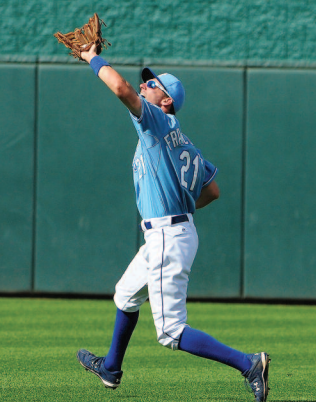
With the introduction of the BBCOR bat resulting in much lower offensive outputs, amateur baseball is undergoing a significant shift in terms of how the game is played. Taking an exclusively offensive approach in hopes of outscoring opponents has taken a backseat to an emphasis on the fundamentals of the game. One of these fundamentals is hitting the cutoff man, which has become one of the most valued commodities in baseball.
Until recently, however, "making the cut" hasn't seemed so important. At the lower levels, which are normally played on smaller fields, hitting the cut may not be a necessity during game action, leaving youth coaches with the difficult decision of whether to work on something in practice that will not likely be an in-game issue.
In general, players are first introduced to this aspect of the game once they reach the middle school level, if not later. The 90-foot base paths are hardly an equal trade-off compared to the exponentially larger outfields at the high school level and beyond. Therefore, when prep outfielders are asked to "show off" their arms, throws from the outfield are sent sky-high in hopes of falling near third base or home plate.
This is also a common practice during showcase events nowadays, where gauging outfield arm strength based on a radar gun reading is normally held in higher regard than where the throw is actually headed. While this is an accurate way to determine velocity and relative arm strength, outfielders in these situations are rarely able to take advantage of actual game-like events.
Believe it or not, this issue goes all the way up to the Major Leagues. As the outfield is now considered to be an "offensive" position (especially for left and right fielders), youth players that have grown up playing in the infield are pushed to the outfield so teams can use their bats in the lineup.
With the influx of explosive young players like Bryce Harper (20 years old), Mike Trout (21), Giancarlo Stanton (23), Jason Heyward (23) and many more that are making a splash in the big leagues, even some players that are considered among the best at their positions have had their struggles doing the basics.
Minnesota Twins' outfielder Aaron Hicks was benched this past May for his failure to hit the correct cutoff man in double-relay situation earlier this season. Hicks, who is just 23 years old, is considered one of the MLB's top prospects and is among league leaders in outfield assists this season.
"If we'd hit the right cutoff man, he'd have been out by 50 yards," Twins manager Ron Gardenhire said of the play. While he might have exaggerated that figure just a bit, Gardenhire made a good point. "(Second baseman Brian) Dozier was standing with his hands up, and we threw the ball to second base with (Pedro) Florimon, so now the ball has to bounce and gives the guy extra time. Hit the cutoff man… that would have definitely nailed the guy."
There are a few key components in an effective cutoff throw. The first is securing the ball – whether in the air or on the ground – and getting rid of it as quickly as possible, ideally around one second. While hand-eye coordination is obviously helpful, footwork is crucial here. The game's best outfielders are able to glove fly balls or grounders, transfer them to their throwing hands and get rid of the ball "in stride."
Staying on top of the ball through the throw is also vital for two reasons. The first is that it allows for the cutoff man –typically a middle infielder – to handle the throw (worst case scenario being a throw that takes a bounce or two on its way in). Secondly, it's much easier to make a relay throw from an athletic position, which is easier to get to if an infielder doesn't have to jump to catch the ball.
Another necessity for effectively hitting the cutoff man is keeping the throw as straight as possible. This is accomplished by keeping the throwing elbow up. While considering our first pointer of getting rid of the ball as quickly as possible, this can be difficult, especially when considering that using a four seam grip is ideal.
In a perfect world, all three of these factors are accomplished- the ball is received and thrown in around one second, with the throwing elbow up and a four seam grip. We understand that executing all three of these pointers is quite a feat when considering the speed of the game, so we aim to accomplish two out of three.
For instance, if an outfielder gets rid of the ball quickly with a four-seam grip, it is likely that the throw will be down. If it takes the outfielder an extra moment to throw the ball but they're able to do so with a high elbow and a four seam grip, then odds are the throw will be delved the accuracy. And if the outfielder can't get a four seam grip on the ball but gets rid of it quickly and downhill, then odds are the throw will stay relatively straight.